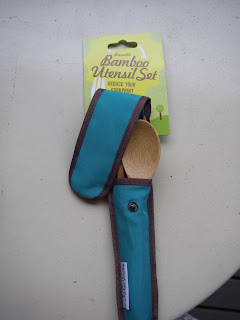This is a Christmas present that I received from my dear friend, Kathleen. I love the “reduce your fork print” tagline. The tagline reminds me that reducing my fork print relates to how I reduce my Water Footprint.
I routinely pass out information about how to save water in and around our customers’ homes. Turn off the water when you brush your teeth . . . install water saving fixtures and appliances. . . Use a broom instead of a hose to clean your sidewalk . . . . You get the idea. However, I learned that only 3% of water is used around the house. A whopping 97% of the water that we use is invisible. Everything that we consume requires water to grow, transport or manufacture. For example, some hidden uses of water are:
- One sheet of paper -2.6 gallons
- One glass of beer- 19.8 gallons
- One glass of wine-31.7 gallons.
- One hamburger - 634 gallons
- One cotton t-shirt – 713 gallons
- Morning Latte – over 50 gallons
It is no surprise to learn, especially during the holiday season, that we from the USA have the largest water footprint. What we consume in our part of the world often impacts water resources in another place as most of what we buy is manufactured out of country. Indeed, 65% of our hidden water use lies abroad. The global principles of water use are explored at the Water Footprint Network website where you can find a calculator to determine your water footprint.
It’s sometimes overwhelming to think about our direct water use! How can we deal with the added weight of invisible water? Since it’s time for resolutions, I will try to make small changes. One pair of blue jeans takes 1,800 gallons of water to manufacture. I will seek out gently used jeans at a thrift shop before buying new. Also, serving meat, especially beef, is probably is my greatest use of invisible water. I pledge to make at least one meal per week meatless.
So, you could say that I will be reducing my water footprint and my fork print this year!

